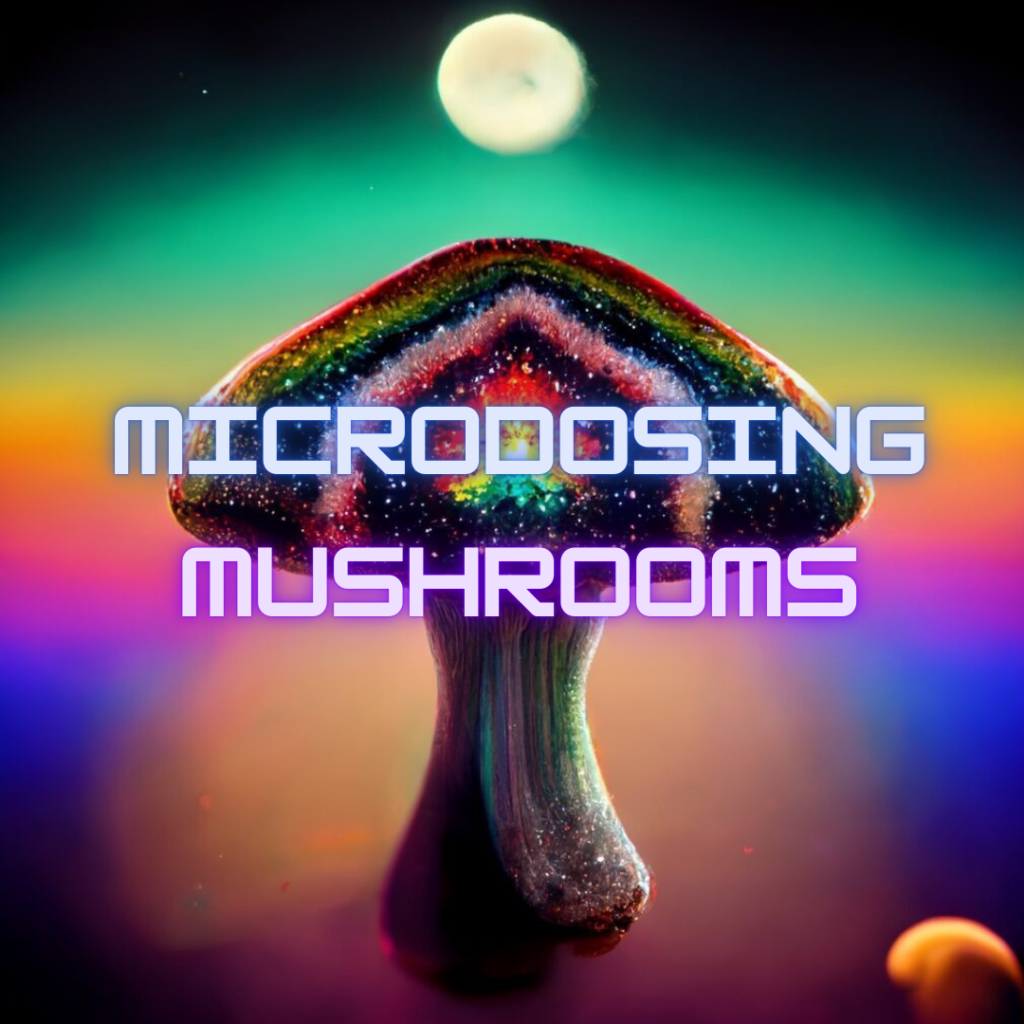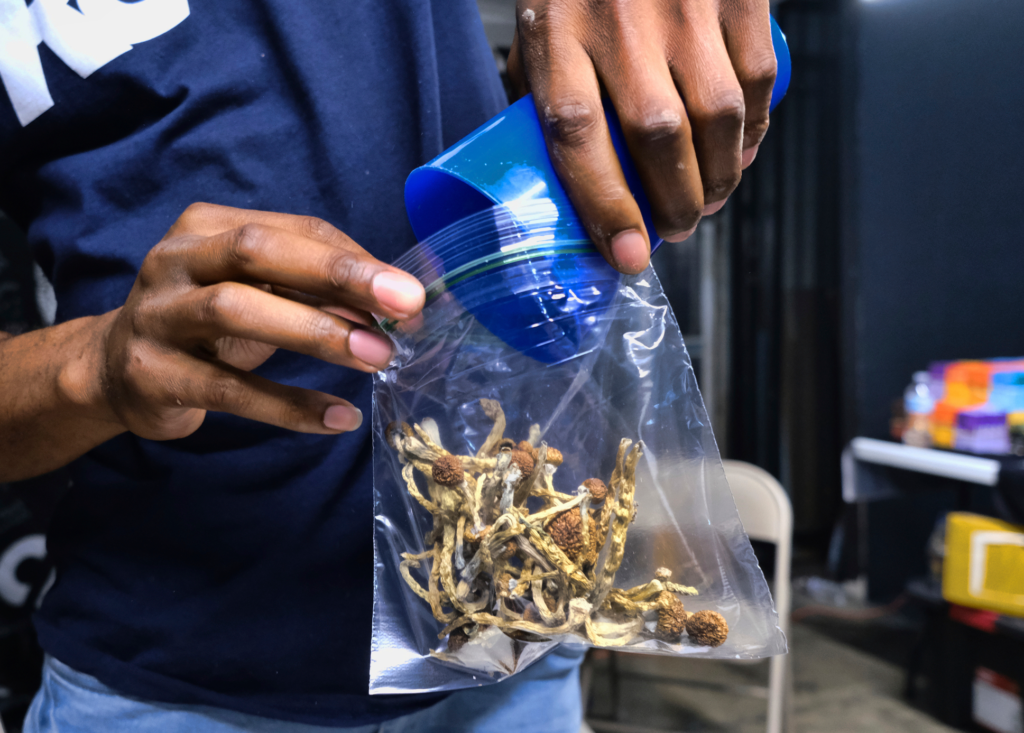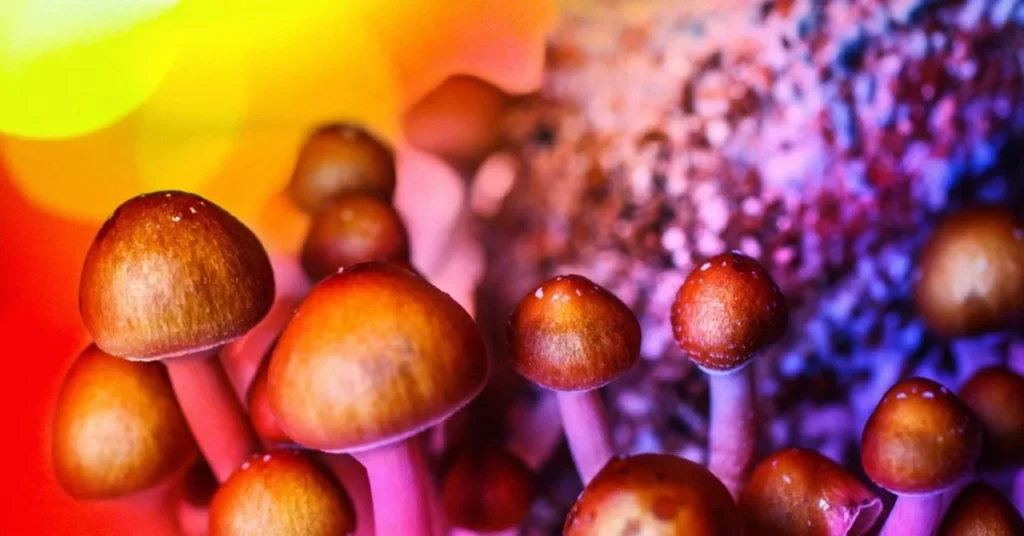Table of Contents
Creating a comfortable and supportive setting
1. Start Low and Go Slow
Dosage guidelines
Observing and adjusting carefully
2. Choose Your Strain Wisely
Recommended mild strains
Finding balance through experimentation
3. Follow a Schedule
Popular routines: Fadiman protocol and Stamets stack
Preventing tolerance build-up
4. Set Intentions and Journal Your Experience
Clarifying your goals
Tracking effects on dosing and non-dosing days
5. Listen to Your Body and Mind
Adjusting dosage or schedule based on response
Supporting your practice with self-care
6. Stay Safe
Importance of mindset and environment
1. Start Low and Go Slow: Dosage Basics for Microdosing Mushrooms
Microdosing psilocybin mushrooms is becoming increasingly popular as a way to experience subtle yet meaningful benefits, such as enhanced mood, creativity, and mental clarity, without the intense psychedelic effects associated with full doses. However, starting with the right approach is essential to achieving a safe, balanced experience. A key guideline in microdosing is to “start low and go slow,” meaning that you should begin with a very low dose and adjust gradually, if needed. This ensures that you stay within a sub-perceptual range, where the effects are noticeable but not overpowering, allowing you to go about your day without any significant changes to your perception or functionality.
Dosage: Understanding Sub-Perceptual Levels
The typical microdose of dried psilocybin mushrooms ranges between 0.1 to 0.3 grams. This small amount is considered sub-perceptual, meaning that while you might feel subtle shifts in mood or focus, you won’t experience any of the “trippy” or hallucinogenic effects associated with higher doses. The goal with microdosing is not to embark on a psychedelic journey but to gain gentle, cumulative benefits over time. Because each individual’s physiology is different, starting on the low end—around 0.1 grams—is often recommended, especially if you’re new to psilocybin or microdosing in general.
When beginning, it’s important to measure your dose carefully. A digital scale that measures to the nearest 0.01 grams can help you achieve precise dosing, which is essential for keeping effects consistent and manageable. Starting low also allows your body to adapt slowly to the effects, minimizing the risk of overstimulation, which can happen if you unknowingly take more than your body can handle at once.
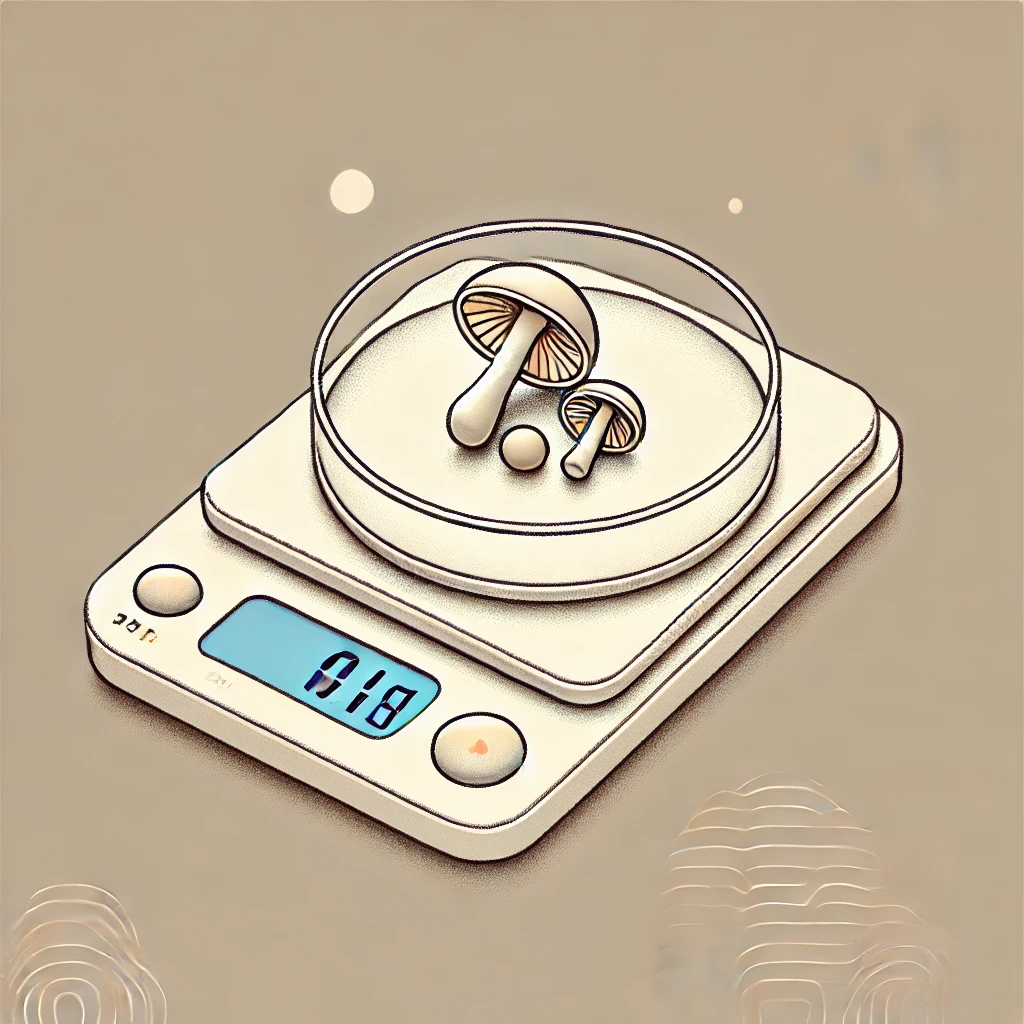
Observe: Taking Time to Notice the Effects
Once you’ve taken your initial microdose, give yourself time to observe how you feel. The effects of a microdose can be subtle, often manifesting as a gentle boost in mood, a slight increase in focus, or a bit more energy. You may notice that you feel slightly more positive or motivated, but you shouldn’t feel altered. This “wait and see” approach allows you to gauge your individual response to the dose, as everyone’s body metabolizes psilocybin differently.
In the early stages, keeping a journal can be highly beneficial. Document how you feel on each dosing day, noting any shifts in mood, energy, or productivity. Recording these observations helps you establish a baseline and recognize any patterns over time. Many people find that with consistent microdosing, the benefits gradually build up, creating a sustained improvement in mental clarity or emotional balance. However, rushing into higher doses too soon can lead to unwanted side effects, like jitteriness or difficulty focusing, which defeats the purpose of microdosing as a tool for gentle, positive enhancement.
Avoid the Urge to Increase Too Quickly
A common mistake for new microdosers is to increase the dose too quickly, especially if they don’t notice effects immediately. Microdosing isn’t about instant results—it’s about slow, cumulative progress. Resist the urge to add more until you’ve given your body time to adjust to the initial dose. After a few sessions at a low dose, if you feel comfortable and are seeking slightly stronger effects, you can gradually move up to the next dose level (e.g., 0.15 or 0.2 grams).
Starting low and increasing gradually allows you to find your “sweet spot”—the perfect dose where you gain the benefits of microdosing without any perceptual disruptions. By respecting the “start low and go slow” guideline, you’ll be setting yourself up for a safer, more balanced, and effective microdosing experience.
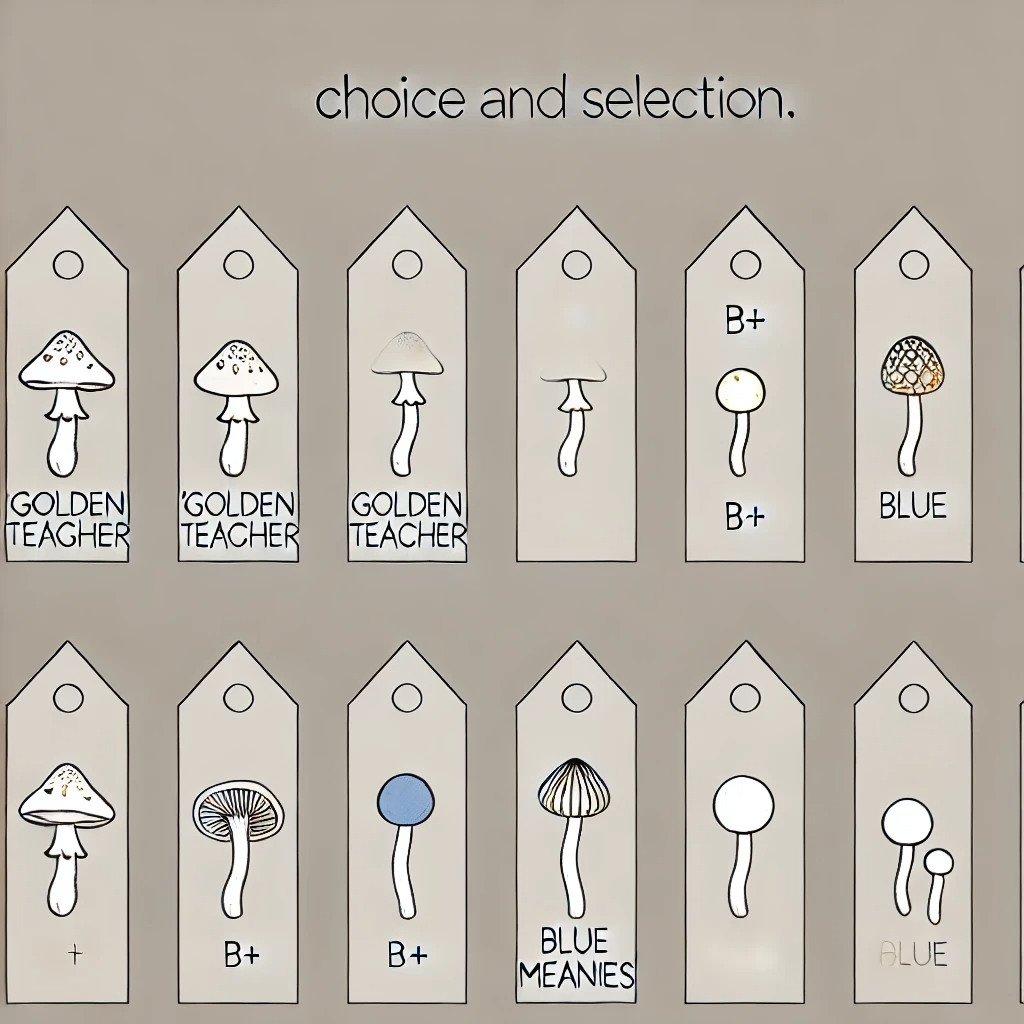
2. Choose Your Strain Wisely: Finding the Right Psilocybin Mushrooms for Microdosing
Microdosing isn’t a one-size-fits-all experience, and choosing the right mushroom strain is a key factor in tailoring it to your personal needs. Each strain of psilocybin mushrooms has its own unique characteristics and effects, which can influence your experience. When microdosing, the goal is to find a strain that provides gentle, balanced effects without overwhelming you. Many people find that milder strains, like Golden Teacher, are ideal for this purpose. Understanding the subtle differences between strains will help you select the one that aligns with your goals for microdosing, whether that’s to improve focus, enhance creativity, boost mood, or support mindfulness.
Mild Strains for a Gentle Start
Golden Teacher is often recommended as an excellent starting point for beginners due to its reputation for producing mild and manageable effects. Known for its balanced qualities, Golden Teacher can provide a gentle lift in mood and mental clarity without any pronounced psychedelic impact, making it well-suited for microdosing. Many users find it enhances their day without being distracting, allowing them to carry out their normal activities with a subtle uplift in mindset.
Another strain frequently recommended for microdosing is B+ (or B Plus), which also has a reputation for mild effects and ease of use. B+ tends to produce feelings of positivity and calmness, making it a good choice for those interested in reducing anxiety or improving their outlook. These mild strains are excellent options if you’re new to psilocybin or looking to start with a manageable, balanced experience.
Strain Selection and Personal Balance
Choosing the right strain is a personal decision, and experimenting within a safe range can help you find a balance that works for you. Certain strains affect energy levels, focus, and mood differently. For instance, if you’re looking to boost focus and mental clarity, strains with slightly more energetic qualities may be beneficial. Some users report that strains like Albino A+ or Blue Meanies offer a subtle, motivating effect that helps with productivity and concentration. However, since these strains can sometimes be slightly more potent than Golden Teacher or B+, starting with a very low dose is essential.
If you’re seeking to improve your mood or relax without feeling overly energized, strains like Brazilian or Ecuadorian mushrooms are known for their calming, euphoric qualities. These can be beneficial for those who want to reduce stress or uplift their mindset. By gradually experimenting with different strains, you’ll begin to notice which ones provide the most desirable effects for your specific needs, helping you create a customized microdosing regimen.
Journaling for Consistency and Insight
When experimenting with strains, keeping a journal is invaluable. Document the strain, dosage, and any effects you experience, as well as the circumstances of each microdose. Noting subtle changes in mood, focus, or energy can help you build a reliable reference to see which strains are most effective for specific goals. Journaling also helps track patterns over time, revealing which strains consistently provide positive effects and which may need to be adjusted or avoided.
Avoid Overwhelm: Start with a Single Strain
It may be tempting to try several strains at once to discover the “best” effects, but this can make it difficult to pinpoint what’s working and what isn’t. Instead, start with one strain and spend a few weeks observing its effects before moving on to another. By focusing on one strain at a time, you can gain a deeper understanding of how each one affects you, helping you make more informed choices.
In conclusion, choosing the right strain can make a significant difference in the quality of your microdosing experience. A thoughtful, gradual approach, starting with milder strains like Golden Teacher, helps you build a sustainable practice that enhances your day-to-day life. With patience and careful observation, you’ll discover the strain that aligns with your goals, bringing you closer to a balanced, intentional microdosing journey.
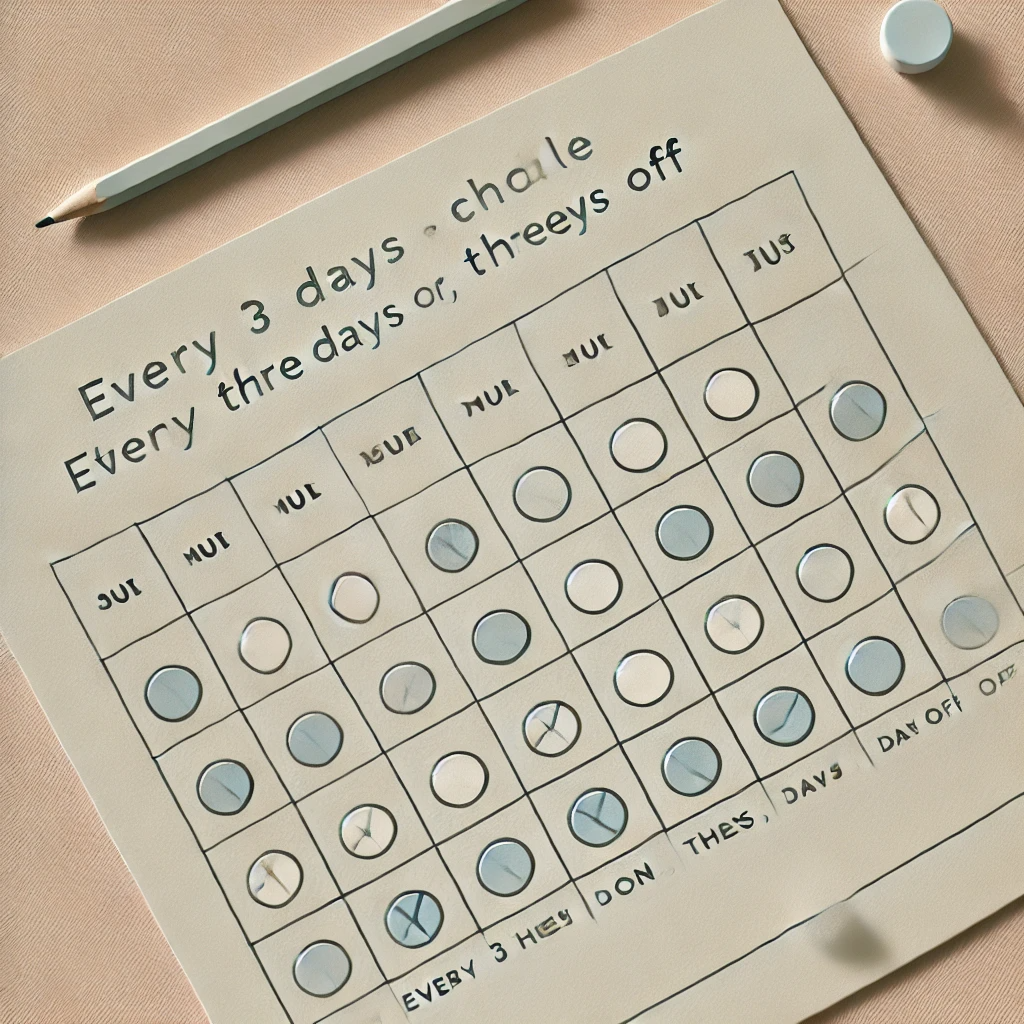
3. Follow a Schedule: Establishing a Routine for Effective Microdosing
Creating a consistent schedule is one of the most important aspects of a successful microdosing practice. When you follow a structured routine, it becomes easier to observe how each dose affects your mental clarity, mood, and overall well-being over time. The idea behind microdosing is not just to feel better on dosing days but to allow the cumulative effects to bring lasting benefits into your daily life. By following a proven schedule, you can prevent tolerance build-up, maximize the positive effects, and cultivate a balanced microdosing experience that works for you.
Routine: Popular Schedules for Microdosing
Two of the most popular protocols for microdosing psilocybin mushrooms are the Fadiman protocol and the Stamets stack. These routines were designed to allow for the integration of subtle benefits without creating a reliance or tolerance. Each protocol offers its own unique approach to spacing doses, and experimenting with both can help you find the best fit for your goals.
The Fadiman protocol, developed by psychologist James Fadiman, is one of the simplest and most widely used schedules. According to this protocol, users take a microdose every three days: one day on, two days off. For example, if you dose on Monday, you would skip Tuesday and Wednesday, and dose again on Thursday. This schedule is specifically designed to give your body time to process and integrate the effects, as well as to avoid tolerance build-up. The two days off help ensure that the body does not adapt too quickly to the psilocybin, allowing the user to maintain consistent, subtle benefits without experiencing a diminishing return on the effects.
The Stamets stack protocol, named after renowned mycologist Paul Stamets, follows a slightly different schedule of four days on and three days off. This approach also incorporates additional supplements, like lion’s mane mushroom and niacin, to potentially enhance neurogenesis (the growth of new neurons). The combination of psilocybin and lion’s mane is believed to have synergistic effects on cognitive function and mental clarity, while niacin, or vitamin B3, aids in distribution throughout the body. The Stamets stack may be more intense than the Fadiman protocol, as it involves four consecutive days of dosing, which can lead to stronger cumulative effects. The three-day break then allows the body to rest, helping to prevent tolerance.
Avoid Tolerance Build-Up with Regular Breaks
An important reason to follow a structured microdosing schedule is to prevent your body from developing a tolerance to psilocybin. When you take psilocybin too frequently without breaks, the receptors in your brain can become less responsive, requiring higher doses to achieve the same effects. Microdosing protocols with built-in breaks are specifically designed to mitigate this issue.
With regular intervals between doses, your body has time to reset and maintain sensitivity to the compound. This approach helps sustain long-term effectiveness and reduces the likelihood of needing to increase your dosage over time. Many users find that the benefits of microdosing, such as improved mood, focus, and creativity, can be sustained with minimal dosing when they adhere to a schedule.
Experimenting and Finding Your Ideal Routine
While the Fadiman and Stamets protocols are widely recommended, it’s essential to remember that each individual’s response to psilocybin can differ. Some people might benefit from less frequent dosing, like once a week, while others find their ideal rhythm with one of the established protocols. The best way to discover your optimal schedule is by observing how you feel on both dosing and non-dosing days and adjusting as needed.
Keeping a journal is invaluable for this process. Record your observations each day, noting any shifts in mood, productivity, creativity, or other areas you’re hoping to improve. By consistently tracking these factors, you can make informed decisions about any adjustments to your routine.
In summary, following a schedule for microdosing is essential to a balanced, effective practice. Whether you choose the Fadiman protocol, the Stamets stack, or another rhythm that works best for you, committing to a routine with regular breaks will help you experience the lasting benefits of microdosing without risking tolerance.
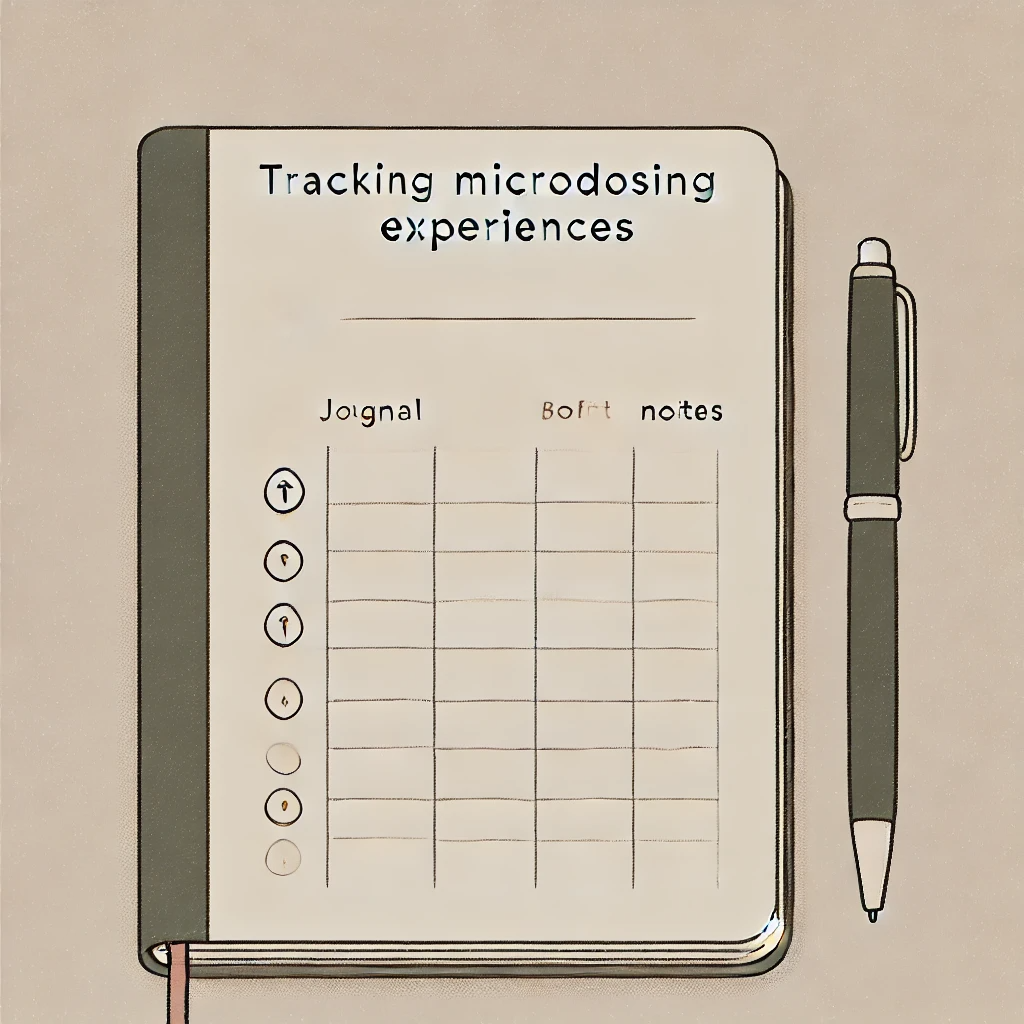
4. Set Intentions and Journal Your Experience: Building a Purposeful Microdosing Practice
One of the most important aspects of a successful microdosing practice is setting clear intentions and maintaining a journal. Having a specific goal in mind—whether it’s to improve mood, boost creativity, enhance focus, or simply explore personal growth—will guide your experience and help you measure your progress. Journaling, meanwhile, serves as a tool to track the subtle effects of microdosing, providing valuable insights into how different dosages and schedules impact your daily life. By aligning your microdosing practice with a purpose and recording your experiences, you can create a more mindful, effective, and intentional journey.
Goals: Clarify Your Intentions for Microdosing
Before starting a microdosing regimen, it’s essential to clarify why you want to try it. Each person’s reasons may vary, but common goals include improving mental health, managing stress, enhancing creativity, or supporting focus. Having a clear goal will shape your approach to microdosing and help you decide which strains, dosages, and schedules are most appropriate.
For example, if you’re microdosing primarily to boost creativity, you might choose a strain that is known for enhancing creative thinking and experiment with a schedule that aligns with your work or project timelines. Alternatively, if your goal is to improve mood or manage anxiety, you might want to focus on strains with calming effects and a dosing routine that supports stability without overstimulation. Whatever your intention, be honest with yourself about what you hope to achieve, and remember that microdosing is a tool to complement, not replace, other practices that support well-being, like meditation, exercise, or therapy.
Setting intentions also helps create a sense of accountability and structure around your practice. Knowing why you’re microdosing gives you a reference point, making it easier to adjust your approach if you’re not seeing the desired results. A clear intention acts as a compass, helping you remain focused on your journey and ensuring that your practice is both safe and meaningful.
Track: Journaling Your Experiences for Greater Insight
Journaling is a powerful tool for anyone engaged in microdosing, as it allows you to record and reflect on subtle changes over time. By documenting each dosing day, non-dosing day, and any shifts in mood, productivity, or creativity, you can identify patterns and fine-tune your practice to suit your needs.
Start each entry with basic details like the date, dose amount, and strain used, followed by notes on how you feel physically and mentally. Include any observations on your mood, focus, energy levels, and creativity. This practice can reveal trends that may not be immediately noticeable—perhaps you notice that microdosing improves focus on your workdays or boosts creativity during projects. Tracking these changes will help you adjust your dosage, schedule, or strain as needed to support your goals.
It’s also helpful to note any external factors that may impact your experience, such as diet, sleep, exercise, or stress levels. Microdosing interacts with various aspects of your life, and understanding how these elements influence each other can help you optimize your routine. If you experience an unexpectedly low mood or heightened stress on a particular day, journaling allows you to determine if these changes are due to external factors or the microdose itself.
Reflecting on Progress and Making Adjustments
Over time, your journal will become a valuable resource that you can look back on to evaluate your progress. If you’re not seeing the benefits you initially hoped for, your notes may help you identify areas for adjustment, such as trying a different strain, dose, or schedule. Journaling also helps prevent mindlessly increasing your dose, as it encourages you to reflect on each change carefully.
Microdosing is a gradual process, and the benefits often accumulate over weeks or months. With consistent journaling, you may be surprised at the subtle yet meaningful shifts you experience in your mood, focus, or outlook. Your journal entries serve as reminders of how far you’ve come and can reinforce your commitment to a balanced and intentional microdosing practice.
A Mindful Approach to Microdosing
Setting intentions and keeping a journal transforms microdosing from a casual habit into a mindful practice. By being clear about what you hope to achieve and regularly reflecting on your experiences, you can cultivate a more purposeful approach that aligns with your personal growth and well-being. With patience, awareness, and consistency, you’ll be able to fully embrace the journey and reap the benefits of an intentional microdosing practice.
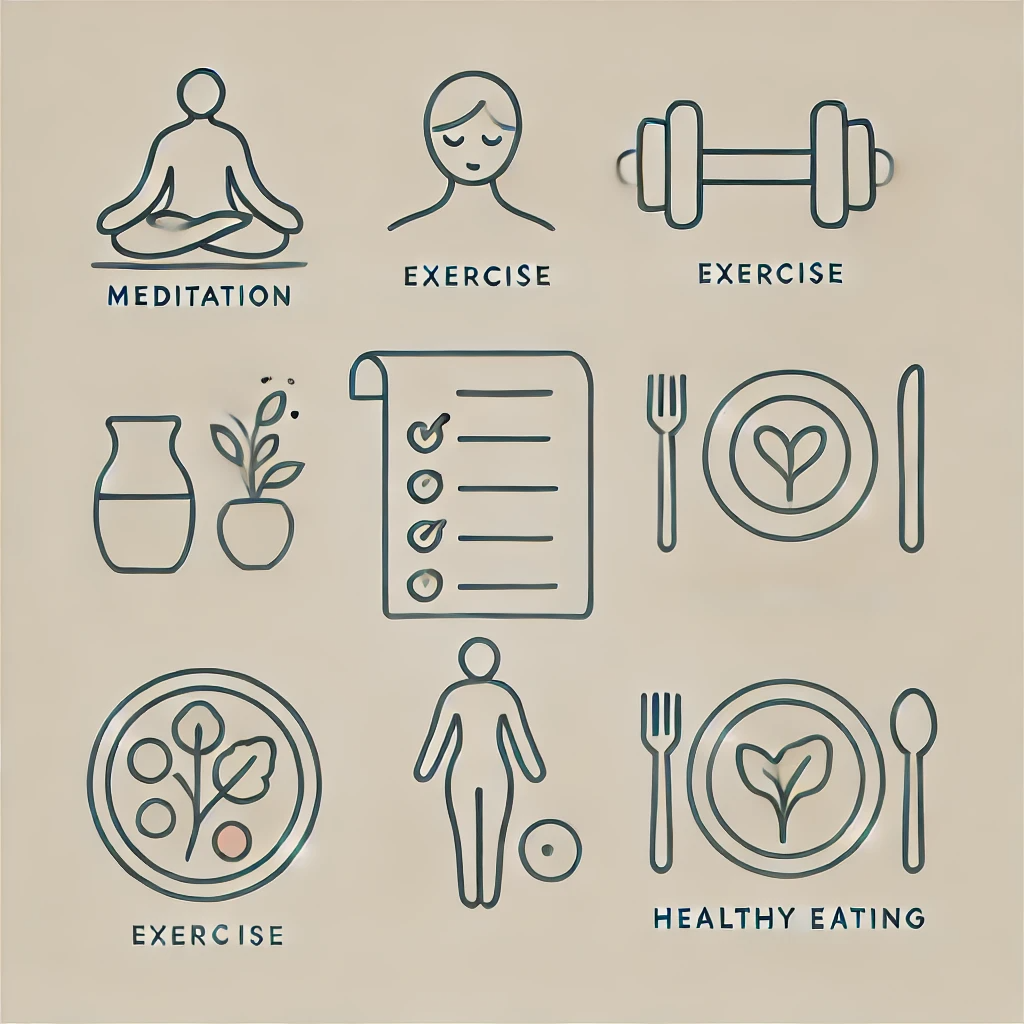
5. Listen to Your Body and Mind: Adjusting for a Balanced Microdosing Experience
When it comes to microdosing, listening to your body and mind is essential to maintain a balanced, positive experience. While microdosing can provide subtle enhancements to mood, focus, and creativity, it’s important to stay attuned to your body’s responses. Microdosing isn’t about forcing results but about working harmoniously with your system. Each person’s physiology and psychology are unique, so being mindful of your body’s signals allows you to adjust your approach as needed. Self-care practices such as meditation, exercise, and healthy eating further support your journey, helping you achieve a holistic sense of well-being.
Adjust When Needed: Fine-Tuning Your Dose and Schedule
As you start microdosing, it’s common to experience slight adjustments in your mood, focus, or energy levels. While many of these effects can be positive, some individuals may encounter mild side effects, such as restlessness, headaches, or feelings of overstimulation. If you notice any discomfort, don’t hesitate to make changes to your dose or schedule. Microdosing should always feel manageable and supportive, not disruptive or overwhelming.
For instance, if you find that a 0.2-gram dose leaves you feeling anxious or jittery, consider reducing the dose to 0.1 grams. Conversely, if you’re not experiencing any noticeable effects after a few weeks, a small increase may be beneficial. Always make adjustments gradually, and allow a few days to observe the effects before making further changes. Remember that microdosing is not about achieving instant results but about slow, cumulative benefits that build over time.
In addition to dosage, your schedule may need to be tweaked. If you’re following a protocol like the Fadiman schedule (dose every three days) and experiencing fatigue on non-dosing days, you might consider a less frequent routine, like dosing once a week. By tuning into how you feel, you can identify the schedule that best supports your goals without causing strain on your mind or body.
Self-Care: Supporting Your Mind and Body
Microdosing can have a powerful effect when combined with a strong foundation of self-care practices. Engaging in activities like meditation, exercise, and mindful eating can amplify the positive effects of microdosing while helping to keep any negative effects in check. Think of these practices as a way to ground and balance the subtle shifts in perception and energy that microdosing can bring.
Meditation, for example, can help you stay present and aware, making it easier to tune into your body’s responses and notice any subtle shifts that microdosing may influence. Many people find that even a few minutes of meditation each day can improve mental clarity, reduce stress, and promote emotional resilience, enhancing the overall experience of microdosing.
Exercise is another key component. Physical activity naturally boosts mood and energy levels by releasing endorphins, improving blood flow, and reducing stress. Whether it’s a gentle walk, yoga, or a more intense workout, regular exercise can help you feel more balanced and energized, complementing the effects of microdosing.
Finally, eating a healthy, balanced diet is essential for supporting your body’s overall functioning. Nutrient-rich foods like leafy greens, whole grains, and lean proteins provide the vitamins and minerals necessary for optimal brain function and emotional stability. Avoiding processed foods, refined sugars, and excessive caffeine can also help prevent mood swings or energy crashes, which could interfere with your microdosing experience.
Reflection and Adjustment for a Holistic Experience
Listening to your body and mind also means periodically reflecting on how microdosing aligns with your broader lifestyle. Take time to evaluate how you feel both physically and mentally, and consider whether there are any additional self-care practices that could support your well-being. Sometimes, simple lifestyle changes—like improving your sleep routine, drinking more water, or spending time outdoors—can make a significant difference in how you respond to microdosing.
By taking a holistic approach, you’ll develop a deeper connection with your body’s needs and create a sustainable, positive experience with microdosing. Self-care and mindful adjustments help you avoid dependency, reduce potential side effects, and maintain a balanced, enriching journey. Remember, microdosing is a tool meant to complement your overall wellness, not a substitute for healthy habits. Through consistent self-care and mindful listening, you can cultivate a microdosing practice that’s empowering, safe, and beneficial to your mental and physical health.

Stay Safe: Creating a Supportive Environment for Microdosing
While microdosing is typically a gentle and subtle practice, safety remains a top priority, especially regarding your mindset and environment. The conditions under which you microdose can greatly influence your experience, affecting how you feel throughout the day and how effectively you achieve your intentions. Even small doses of psilocybin can subtly influence mood, perception, and energy, so it’s essential to approach each session with mindfulness, care, and a supportive environment. Ensuring a stable mindset and a comfortable setting can make a significant difference in the benefits you gain from microdosing.
Mindset: Approach Microdosing with Clear Intentions
Having a healthy, positive mindset is essential for a beneficial microdosing experience. Before taking a dose, take a few moments to reflect on why you’re microdosing and what you hope to gain from it. Approaching microdosing with clear intentions can help you feel grounded and direct your focus toward the positive changes you seek, whether it’s improved mood, heightened creativity, or greater mindfulness.
Being in a positive mental state is also essential for minimizing any potential negative effects. While microdosing is unlikely to produce intense or overwhelming feelings, starting a session in a calm, relaxed state can help you better manage any subtle shifts in mood or perspective that might arise. If you’re feeling stressed or anxious, it may be best to wait until you’re in a better mental space to begin your microdosing session. Remember, microdosing should feel supportive, not stressful.
Some people find that meditation or breathing exercises before microdosing can be helpful for centering their thoughts and promoting a calm state of mind. These practices encourage mindfulness and can reduce feelings of anxiety or restlessness, creating a more positive foundation for the experience. A grounded mindset not only enhances the benefits of microdosing but also helps you stay aware of any shifts in mood, energy, or focus throughout the day.
Environment: Set Up a Safe, Comfortable Space
Your environment plays a crucial role in shaping your microdosing experience. While a microdose is unlikely to produce strong psychedelic effects, psilocybin can still subtly influence your perception and emotional state. For this reason, practicing microdosing in a supportive, comfortable environment is essential. Choose a setting where you feel safe, relaxed, and free from distractions or stressors.
If possible, start your microdosing practice in a familiar space, like your home, where you can control your surroundings and limit interruptions. Being at home also allows you to experiment with different doses or strains without the added pressure of being in a public or unfamiliar environment. Over time, as you become more comfortable with microdosing, you may feel more confident bringing it into other areas of your life, like work or social settings, if appropriate.
For those who work from home, setting up a calming workspace can be beneficial. Add elements like natural light, plants, or calming music to create a more peaceful atmosphere. These small touches can make a difference, helping you feel relaxed and focused. If you plan to microdose in nature, be sure to choose a quiet, familiar outdoor space that allows you to unwind and connect with your surroundings.
Maintaining Consistency and Familiarity
Safety in microdosing also involves consistency. Sticking to a routine in a familiar environment can help you observe the effects of each dose more accurately, as changes in setting can impact your mood and perception. This stability allows you to track subtle shifts in your energy or focus without being influenced by environmental stressors. Over time, this consistency will help you refine your practice, giving you a more reliable understanding of how microdosing affects you.
Setting Boundaries with Others
Another important aspect of creating a safe microdosing environment is being mindful of your social interactions. Microdosing is a personal experience, and it may be beneficial to avoid people who might negatively influence your mood or energy during your dosing days. Instead, surround yourself with supportive people who respect your practice, especially if you’re in the early stages of exploring microdosing.
In summary, staying safe in your microdosing practice means cultivating a positive mindset and supportive environment. Through a calm and familiar setting and a grounded approach, you can create a safe, beneficial experience that allows you to explore the subtle effects of microdosing with peace of mind. Whether you’re microdosing for creativity, focus, or emotional balance, safety and comfort are essential for a fulfilling journey.
Here are some helpful external resources to enhance your understanding of microdosing psilocybin:
- The Third Wave – Comprehensive guides and resources on microdosing psychedelics, including psilocybin:
- Microdosing Institute – Research, protocols, and community insights into microdosing practices:
- MAPS (Multidisciplinary Association for Psychedelic Studies) – Scientific research on psychedelics, mental health, and safety:
- Psychedelic Science by DoubleBlind Magazine – Articles and studies on safe and effective psychedelic use, including microdosing:
- James Fadiman’s Microdosing Research – Insights and protocols from one of the pioneers in microdosing:
Each of these resources offers different perspectives and evidence-based information to help you further explore safe and mindful microdosing practices.

